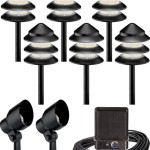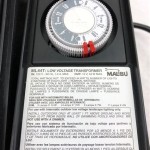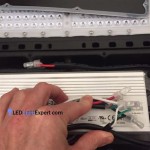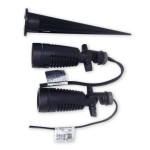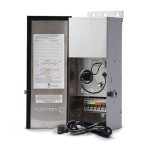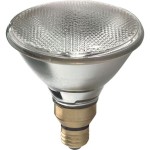Contemporary Outdoor Wall Lights With Motion Sensor Light
Contemporary outdoor wall lights with motion sensor capabilities represent a fusion of modern aesthetics, energy efficiency, and enhanced security. These lights are designed to complement the architectural style of contemporary homes while providing practical illumination and deterring unwanted activity. The integration of motion sensor technology allows these lights to activate only when movement is detected, conserving energy and extending the lifespan of the light fixture.
The market for outdoor lighting has evolved significantly in recent years, driven by advancements in LED technology, smart home integration, and a growing emphasis on sustainable living. Contemporary designs often feature clean lines, minimalist profiles, and durable materials that can withstand the elements. Motion sensor functionality adds an extra layer of convenience and security, making these lights a popular choice for homeowners seeking both style and practicality.
Selecting the right contemporary outdoor wall light with a motion sensor involves considering various factors, including the design aesthetic, the detection range of the sensor, the light output (measured in lumens), the energy efficiency of the light source, and the durability of the materials used in construction. Understanding these aspects is crucial for making an informed decision and ensuring that the chosen light fixture effectively meets the homeowner's needs.
Understanding Motion Sensor Technology
Motion sensor technology used in outdoor lighting typically relies on one of two primary methods: passive infrared (PIR) sensors or microwave sensors. PIR sensors detect changes in infrared radiation (heat) emitted by moving objects, such as people, animals, or vehicles. These sensors are relatively inexpensive and widely used in residential lighting applications. They are effective at detecting movement within a specific range and field of view, but their performance can be affected by environmental factors such as temperature fluctuations and the presence of heat sources like air conditioners or exhaust vents.
Microwave sensors, on the other hand, emit microwave radiation and detect changes in the reflected signal caused by moving objects. These sensors are generally more sensitive than PIR sensors and can detect movement through walls or other obstructions. However, they are also more prone to false triggers caused by environmental factors like wind or rain. Due to their increased sensitivity and potential for false alarms, microwave sensors are less commonly used in residential outdoor lighting.
The detection range of a motion sensor is a critical specification to consider. This range determines how far the sensor can detect movement. A longer detection range may be desirable for larger properties or areas where early detection of potential intruders is important. However, a longer range can also increase the likelihood of false triggers. The sensitivity of the sensor can often be adjusted to fine-tune its performance and minimize false alarms. Height of the installation can significantly impact the motion sensor's range and effectiveness. Following the manufacturer's recommendations is crucial for optimizing performance.
Another important factor is the duration of time that the light remains illuminated after motion is detected. Most motion sensor lights allow the user to adjust this "on-time" setting, typically ranging from a few seconds to several minutes. A shorter on-time conserves energy, while a longer on-time provides extended illumination for tasks like unlocking a door or walking to a vehicle. The optimal on-time setting depends on the specific needs of the homeowner and the intended use of the light.
Choosing the Right Design and Materials
Contemporary outdoor wall lights are available in a wide variety of designs, ranging from sleek and minimalist to more ornate and decorative. The choice of design should complement the architectural style of the home and the overall aesthetic of the outdoor space. Common design elements include clean lines, geometric shapes, and a focus on simplicity and functionality. The finish of the light fixture is also an important consideration, as it contributes to the overall look and feel of the light.
Materials used in the construction of outdoor wall lights play a significant role in their durability and resistance to the elements. Common materials include aluminum, stainless steel, and weather-resistant plastics. Aluminum is lightweight and corrosion-resistant, making it a popular choice for outdoor lighting. Stainless steel is even more durable and offers excellent resistance to rust and corrosion, but it is also more expensive than aluminum. Weather-resistant plastics are a cost-effective option, but they may not be as durable as metal materials.
The lens or diffuser of the light fixture is another important design element that affects the quality and direction of the light. Common materials include glass, acrylic, and polycarbonate. Glass lenses provide excellent clarity and light transmission, but they are also more fragile than other materials. Acrylic lenses are more impact-resistant than glass and offer good light transmission. Polycarbonate lenses are the most durable option and are resistant to shattering, but they may not provide the same level of clarity as glass or acrylic.
When selecting a contemporary outdoor wall light, it is essential to consider the Ingress Protection (IP) rating. The IP rating indicates the level of protection that the light fixture offers against the ingress of solid objects and liquids. An IP rating of IP44 or higher is recommended for outdoor use, as it provides adequate protection against rain and splashing water. For areas that are exposed to more harsh weather conditions, such as coastal environments, a higher IP rating may be necessary.
Energy Efficiency and Light Output
Energy efficiency is a crucial consideration when choosing outdoor lighting, both for environmental reasons and to reduce energy costs. LED (light-emitting diode) technology has revolutionized outdoor lighting, offering significant energy savings compared to traditional incandescent or halogen bulbs. LED lights consume significantly less energy and have a much longer lifespan, reducing the need for frequent replacements. Most contemporary outdoor wall lights with motion sensors now utilize LED technology.
The light output of an outdoor wall light is measured in lumens. Lumens indicate the total amount of light emitted by the light source. The appropriate lumen output depends on the size of the area to be illuminated and the desired level of brightness. For general outdoor lighting, a lumen output of 400-800 lumens is typically sufficient. For larger areas or areas where bright illumination is required, a higher lumen output may be necessary.
Color temperature is another important factor to consider. Color temperature is measured in Kelvin (K) and indicates the warmth or coolness of the light. Lower Kelvin values (e.g., 2700K-3000K) produce a warm, yellowish light that is often preferred for residential outdoor lighting. Higher Kelvin values (e.g., 4000K-5000K) produce a cool, bluish light that is often used for security lighting or commercial applications. The choice of color temperature is a matter of personal preference, but a warm, inviting light is generally recommended for residential settings.
Many contemporary outdoor wall lights with motion sensors offer adjustable brightness settings, allowing the user to customize the light output to suit their needs. This feature can be particularly useful for conserving energy when full brightness is not required. Some lights also offer a dimming function, which allows the user to further reduce the light output and create a more ambient lighting effect.
Finally, consider any smart home integration features. Some models offer wireless connectivity allowing them to be controlled via smartphone, and integrated with other smart home systems. This allows for remote control, scheduling, and integration with other security or lighting features. Be sure to research compatibility with your existing smart home ecosystem.

Lnc Modern Black Motion Sensing Outdoor Sconce With Seeded Glass Shade Farmhouse 1 Light Front Door Wall Lantern 2 Pack Ev26jrhd1745dg8 The Home Depot

Black Contemporary Charlotte Outdoor Wall Light With Motion Sensor Country Metalworks

Black Contemporary Charlotte Outdoor Wall Light With Motion Sensor Country Metalworks

Uolfin Modern Black Outdoor Wall Light 1 Motion Sensor Lantern Sconce With Water Rippled Glass Shade Pack 628g8uefajr4744 The Home Depot

Outdoor Waterproof High Lumen Modern Motion Sensor Activated Wall Lamp Garden Led Solar Light China Interior Made In Com

Motion Sensor Outdoor Led Wall Light Lantern With Glass 15inch Exterior Modern Sconce For Porch Garage Garden Ip54 Waterproof Com

Outdoor Motion Sensor Led Waterproof Wall Sconce Light Bright Plus

Outdoor Wall Lights Security

Modern Outdoor Wall Lamp Stainless Steel Motion Sensor Ip44 Mira Lampandlight

Motion Sensor Outdoor Lights 3 Lighting Modes Led Integrated Porch 1200 Lumen Dusk To Dawn Outside Wall Light With Seeded Glass 13w Modern Exterior Fixture 3000k Sconce For House
Related Posts
